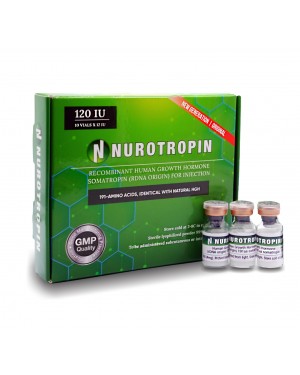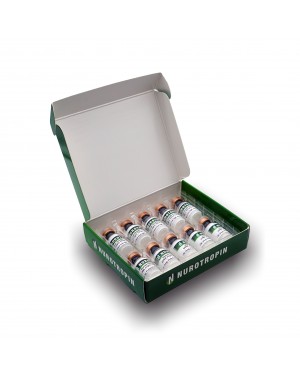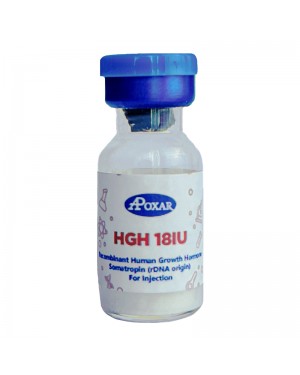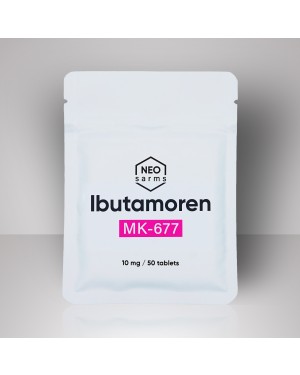Details
IGF-1 LR3 Somatomedin
Classification: Polypeptide hormone
Estrogenic Activity None
Progestational Activity None
Water Retention: None
Aromatization: None
Hepatotoxicity None
Recommended Dosage: 20-80 mcg/day
IGF-1 LR3 General Info
Long(R3)-IGF-1 is a synthetic copy of Insulin-Like Growth Factor-1 (IGF-1). The name Long R3 (LR3) describes how the original IGF-1 was modified. The addition of 13 amino acids and the substitution of arginine at the 3rd position created a very potent polypeptide IGF-1 LR3.
IGF-1 LR3 has the same biological activity and binding affinity as IGF-1 but also has a significantly longer half-life than IGF-1 and shows higher resistance to binding proteins than IGF-1.
The IGF-1 LR3 is three times more potent than endogenous Insulin-Like Growth Factor-1. The highest IGF-1 levels are detected in childhood, and unfortunately, they decrease the older you get.
IGF-1 LR3 Main Benefits
- Crucial in metabolism and physiology
- Supports skeletal development
- Supports muscle mass development
- Supports strength increase
- Potent anabolic agent
- Anti-catabolic agent
- Increases protein synthesis
- Supports new muscle cells creation
- Reduces myostatin
- Promotes lipolysis
- Decreases total body fat
- Improves healing time (trauma, surgery)
- Drops recovery time between workouts
- Longer workouts
- Shorter rest periods in between sets
- Improvement in explosive exercises
- Improves cholesterol profile
- Decreases LDL (bad) cholesterol
- Increases HDL (good) cholesterol
- Stimulates the immune system
- Improves mood and overall well-being
Administration General
IGF-1 LR3 is administered primarily by intramuscular injection. Dosages vary between 20-80mcg/day, with cycles lasting 10-12 weeks.
We strongly DONT recommend starting IGF-1 LR3 at high dosages. IGF-1 LR3 is a very potent hormone, and it is strongly advised to give your body some time to adjust to exogenous IGF-1 LR3.
The best practice is to start at 20mcg/day and gradually increase the dosage by ten mcg every 3-4 days.
The prolonged intake of IGF-1 LR3 can lead to desensitization to its anabolic effect. We strongly recommend a break of at least 4-6 weeks in between the IGF-1 LR3 cycles.
Supplies needed for IGF-1 LR3 Administration
IGF-1 LR3
Bacteriostatic water
Alcohol swab/prep pads
3cc syringe with 23 or 25 gauge
U100 Insulin Syringe
IGF-1 LR3 always comes in the form of lyophilized powder. The amount of this powder is always indicated on the vial.
Bacteriostatic water is sterile water with 0.9% alcohol added. Alcohol does not allow bacteria or anything else to grow in the water; that is why it is considered the best and the most reliable solvent for most substances that require reconstitution.
Reconstituting
-Swab the stoppers of IGF-1 LR3 and the bacteriostatic water vials with an alcohol swab.
-Draw up the 1cc of bacteriostatic water
-Push the syringe with diluent into the IGF-1 LR3 vial.
-Angle the needle, so it is touching the side of the vial.
-It is crucial to avoid shooting directly on the powder.
-Run down the bacteriostatic water slowly on the side of the vial
-Don t rush in the bacteriostatic water forcefully
-After the bacteriostatic water is in the IGF-1 LR3 vial, do not shake or agitate the vial
-Once you have a clear liquid, the IGF-1 LR3 is ready to use
-Store the reconstituted IGF-1 LR3 vial in the refrigerator
The shelf life of reconstituted IGF-1 LR3 is no longer than 30 days.
Measuring the Dosage for Administration
You added 1cc (ml) of the bacteriostatic water to the 1000 mcg IGF-1 LR3 vial.
Every ten on the 1 ml insulin syringe equal 100mcg
IGF-1 LR3 Possible Side Effects
We are all different, and everybody will tolerate IGF-1 LR3 differently. A most common side effect of IGF-1 LR3 is hypoglycemia. The most common signs of hypoglycemia are hunger, drowsiness, dizziness, restless and sleep disturbance.
Less than 20% of users also reported side effects such as joint pain,flu-like symptoms, lethargy, vomiting, headaches, slight water retention, and back pain.
Additional
| substance | Insulin-like Growth Factor |
|---|






